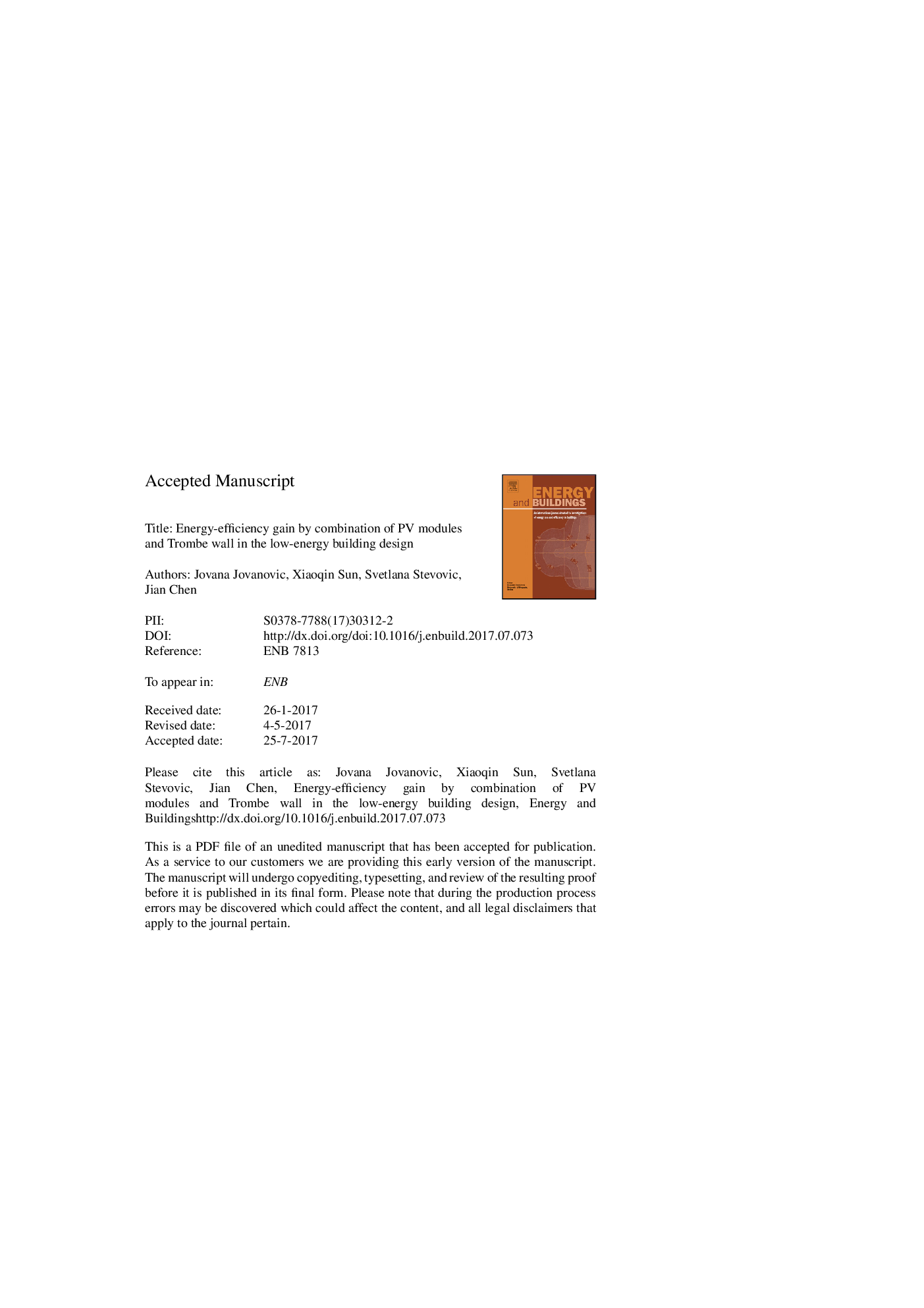| Article ID | Journal | Published Year | Pages | File Type |
|---|---|---|---|---|
| 4918936 | Energy and Buildings | 2017 | 27 Pages |
Abstract
Ubiquitous modernization of building energy and management systems brings tendencies for an effective integration of renewables in buildings. This article shows how solar energy can be in charge of energy savings within a building by integration of solar systems with Trombe wall. Numerical calculations of Trombe wall thermal resistance and its performances in comparison with a common wall are considered. Additionally, energy-efficiency gaining by a combination of PV modules and Trombe wall, using simulations by SAM (System Advisor Model) software is discussed. PV module parameters and their impact on its electricity production are observed and analyzed. The PV module parameters, analyzed in the paper are: the tilt angle α of PV modules, incident angle β of direct sunrays on PV modules, normal beam irradiation N and PV cells operating temperature. With bigger incident angle β of direct sunlight on PV modules, the normal beam irradiation is smaller, which brings less electricity production. The impact of PV module operating temperature can be neglected in comparison with the impact of tilt angle on PV module electricity production. The optimal tilt angle of PV modules for generating maximum annual electricity is around latitude angle. It varies with normal beam irradiation to achieve the maximum monthly electricity production.
Related Topics
Physical Sciences and Engineering
Energy
Renewable Energy, Sustainability and the Environment
Authors
Jovana Jovanovic, Xiaoqin Sun, Svetlana Stevovic, Jian Chen,
